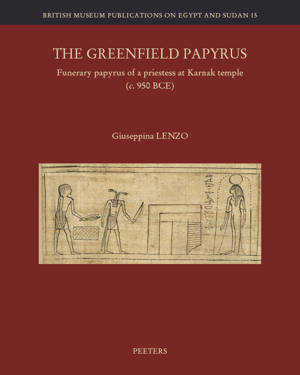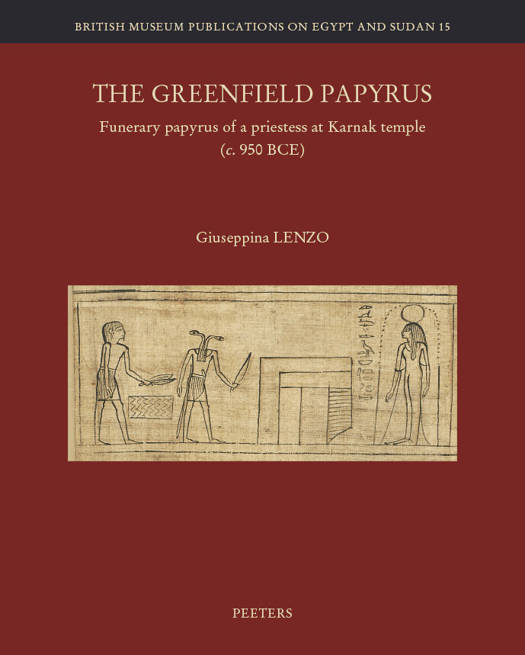
- Afhalen na 1 uur in een winkel met voorraad
- Gratis thuislevering in België vanaf € 30
- Ruim aanbod met 7 miljoen producten
- Afhalen na 1 uur in een winkel met voorraad
- Gratis thuislevering in België vanaf € 30
- Ruim aanbod met 7 miljoen producten
Zoeken
€ 195,00
+ 390 punten
Omschrijving
The Greenfield Papyrus (P. BM EA 10554), at more than 37m in length, is the longest funerary papyrus surviving from ancient Egypt. Its content is highly original because it combines spells from the Book of the Dead with a "mythological" section, as well as with hymns and litanies stemming from the context of temple liturgies. Furthermore, the selection of spells from the Book of the Dead provides very important insights into the Third Intermediate Period (1069-664 BCE). The Greenfield Papyrus is also of central importance to an understanding of the evolution of the Book of the Dead, after the New Kingdom (1539-1069 BCE) and before the Late and Ptolemaic Periods (664-30 BCE). The owner of the papyrus, Nestanebetisheru, occupied a very important position as priestess in the temples of Karnak. Since this role probably gave her access to temple archives, she may have selected the texts of her papyrus herself.
Specificaties
Betrokkenen
- Auteur(s):
- Uitgeverij:
Inhoud
- Aantal bladzijden:
- 491
- Taal:
- Engels
- Reeks:
- Reeksnummer:
- nr. 15
Eigenschappen
- Productcode (EAN):
- 9789042948426
- Verschijningsdatum:
- 18/09/2023
- Uitvoering:
- Hardcover
- Formaat:
- Genaaid
- Afmetingen:
- 245 mm x 305 mm
- Gewicht:
- 612 g

Alleen bij Standaard Boekhandel
+ 390 punten op je klantenkaart van Standaard Boekhandel
Beoordelingen
We publiceren alleen reviews die voldoen aan de voorwaarden voor reviews. Bekijk onze voorwaarden voor reviews.











